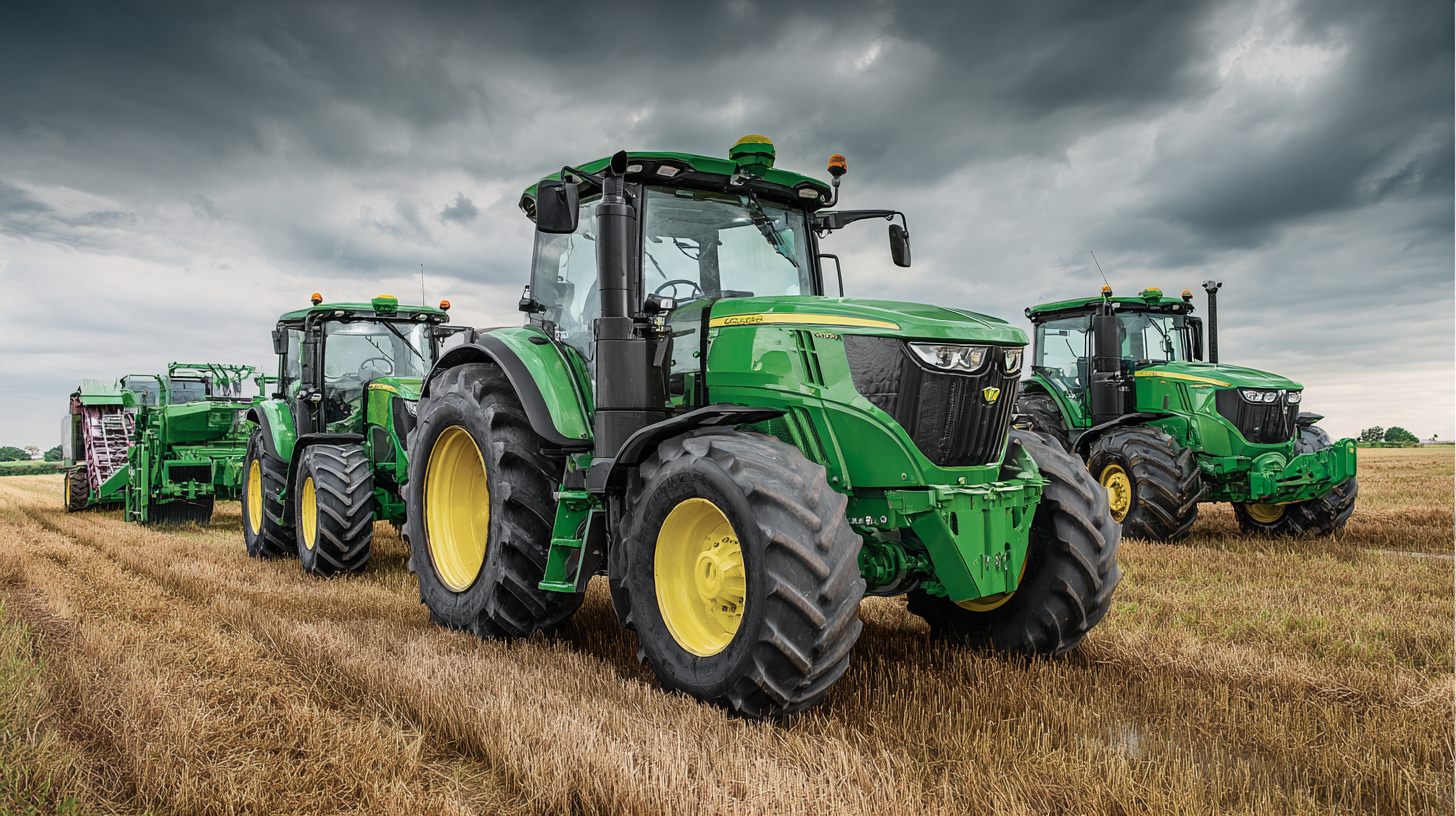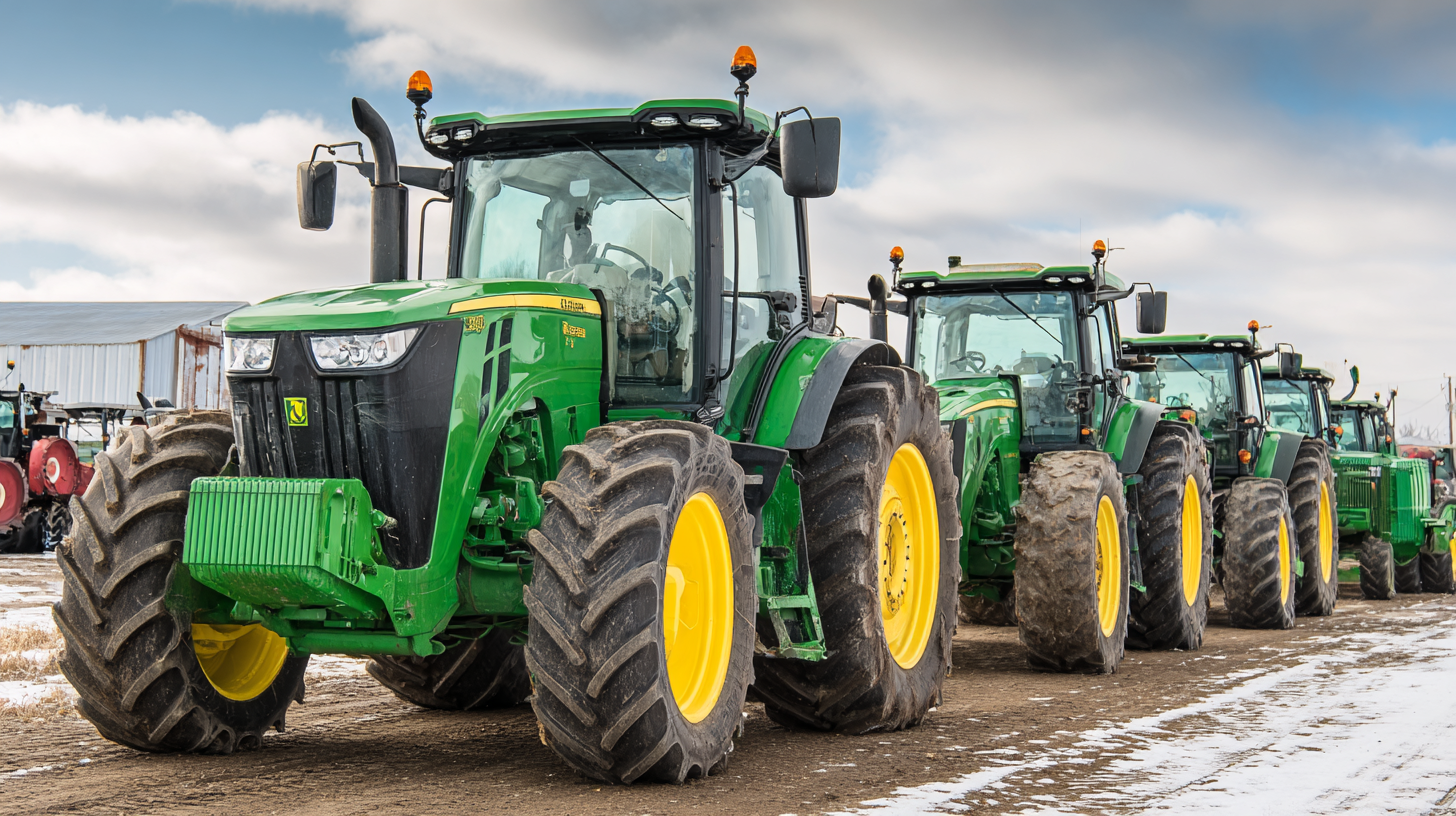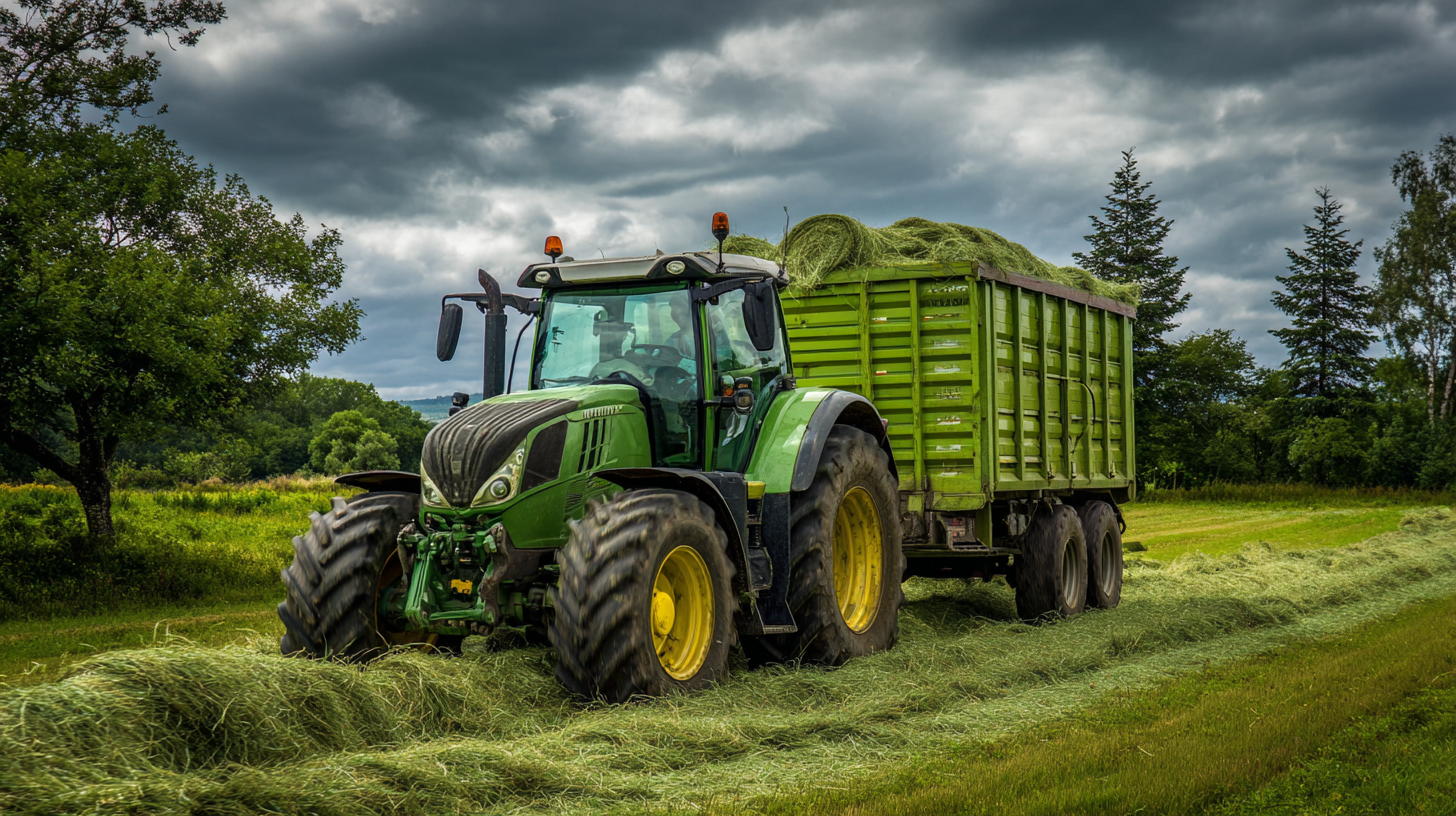In the ever-evolving agricultural landscape, selecting the right farm tractors is crucial for optimizing productivity and ensuring the sustainability of farming operations worldwide. According to a recent report by the Food and Agriculture Organization (FAO), the demand for efficient agricultural machinery, particularly farm tractors, is projected to grow by 40% by 2030 to meet the increasing global food requirements. Moreover, the global tractor market size was valued at approximately USD 90 billion in 2021 and is anticipated to expand at a compound annual growth rate (CAGR) of 5.8% from 2022 to 2030. With the myriad of options available, from compact models to high-horsepower machines, making an informed choice can significantly impact both yield and operational efficiency. This blog will explore alternatives and solutions for selecting the best farm tractors tailored to diverse global agricultural needs.

In today’s rapidly evolving agricultural landscape, selecting the right tractor technology is pivotal for meeting diverse global farming needs. The latest advancements in tractor technology offer a plethora of features designed to enhance efficiency, productivity, and sustainability. From precision farming capabilities to automated systems, modern tractors are equipped with tools that can adapt to various farming practices, whether it’s large-scale industrial agriculture or smallholder farming.
One of the most significant innovations in tractor technology is the integration of smart farming solutions. GPS-guided tractors enable farmers to optimize their field operations by ensuring precise plowing, planting, and harvesting. Furthermore, data analytics can provide insights into soil health and crop performance, allowing for more informed decision-making. As environmental concerns grow, eco-friendly technologies, like hybrid or fully electric tractors, are also making their mark, reducing carbon footprints while maintaining high-performance standards. Embracing these advancements not only enhances operational efficiency but also contributes to sustainable farming practices that can meet global food demands.
When selecting a farm tractor, it's essential to consider the diverse farming requirements that vary greatly across different regions. In North America, for instance, farmers typically prioritize horsepower and durability, as expansive fields demand robust machinery capable of handling heavy tillage and large-scale planting. Tractors equipped with advanced technology for precision agriculture have become increasingly popular, allowing farmers to maximize efficiency and minimize input costs.

In contrast, small-scale farmers in Asia and Africa often favor compact tractors that are versatile and economical. These regions might deal with smaller plots of land where maneuverability and ease of use are paramount. Features like multi-functionality and adaptability to various farming tasks—such as tilling, planting, and transporting—are crucial for these farmers. Understanding local agricultural practices and economic conditions helps determine the best tractor features to cater to these distinct needs, ensuring that farmers can achieve optimal productivity in their unique environments.
When selecting farm tractors for 2025, several key features must be taken into account, especially in light of the rapid advancements in agricultural technology and sustainability. As we move towards a more efficient and environmentally friendly agricultural landscape, tractors equipped with precision farming technologies are becoming essential. These advancements allow farmers to optimize their operations, leading to increased productivity and lower resource consumption. For instance, modern GPS systems enhance navigation and accuracy, which are crucial for effective field management.
Moreover, the demand for powerful and versatile tractors is on the rise. The data shows that the agriculture compact tractor market is projected to witness significant growth, driven by the need for robust machines capable of performing multiple tasks—from planting to harvesting. In particular, models that combine high horsepower with fuel efficiency are increasingly favored by farmers looking to maximize both performance and cost-effectiveness. As technology evolves, features such as automated control systems and enhanced connectivity will likely dominate future tractor models, helping farmers make smarter decisions and adapt to changing agricultural challenges.
This chart represents the assessment of the key features to consider when selecting farm tractors for 2025. The features evaluated include Power, Fuel Efficiency, Versatility, and Durability based on a surveyed dataset.
As the agricultural sector increasingly prioritizes sustainability, selecting eco-friendly tractors has become essential for farmers worldwide. Sustainable farming practices not only help preserve the environment but also improve the efficiency and productivity of agricultural operations. According to a report by the Food and Agriculture Organization (FAO), transitioning to sustainable agricultural practices can increase crop yields by up to 30% while reducing greenhouse gas emissions significantly.
When choosing a sustainable tractor, consider opting for models that utilize renewable energy sources, such as electric or hybrid tractors. These options can lead to lower operational costs and a reduced carbon footprint. For instance, a 2023 study by the International Energy Agency revealed that electric tractors can reduce fuel costs by up to 60%, making them a cost-effective choice in the long run.
Tip: Always evaluate the total cost of ownership, including maintenance and fuel efficiency, when selecting a tractor. Look for certifications indicating the tractor's adherence to environmental standards.
Additionally, prioritize tractors with advanced technology integration, such as precision agriculture tools. These can optimize resource use and minimize waste. According to a recent report from Agribusiness Global, leveraging technology in farming has resulted in yield increases of up to 25% while minimizing inputs.
Tip: Research the available eco-friendly attachments for your tractor, such as cover crop seeding or precision spraying equipment, to further enhance your sustainability efforts.

When selecting farm tractors, achieving cost-effectiveness is crucial for optimizing both quality and budget. According to the 2022 Agricultural Equipment Market Report, the average price of a new tractor can range from $15,000 to over $120,000, depending on specifications and brand. Understanding the balance between initial investment and long-term efficiency can help farmers make informed decisions. For instance, tractors with higher horsepower might come with a steeper price tag, yet they often translate to better fuel efficiency and reduced operational costs over time.
Furthermore, a recent study from the Agricultural Manufacturers Association highlighted that farmers who invest in quality tractors saw a 20-30% increase in productivity. This productivity gain often offsets higher upfront costs through better performance, reliability, and reduced maintenance expenditures. Choosing the right tractor requires careful consideration of features essential for specific farming operations, ultimately leading to sustainable cost savings. Adopting a comprehensive evaluation approach ensures farmers not only meet their immediate operational needs but also invest wisely for future growth.
| Model | Horsepower | Price (USD) | Fuel Efficiency (L/h) | Maintenance Cost (Annual USD) |
|---|---|---|---|---|
| Standard Tractor A | 75 | 15,000 | 7 | 1,200 |
| Premium Tractor B | 100 | 25,000 | 5 | 1,500 |
| Economy Tractor C | 60 | 10,000 | 8 | 900 |
| Hybrid Tractor D | 85 | 22,000 | 6 | 1,300 |